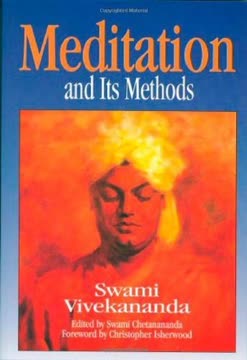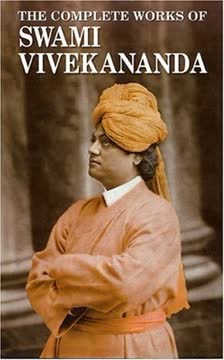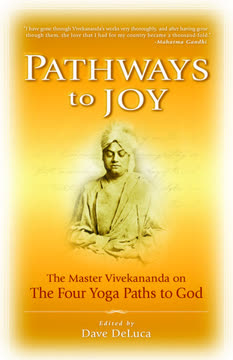Key Takeaways
1. Meditation: The Path to Freedom and Mind Control
Meditation is the power which enables us to resist all this.
Resist nature's pull. Meditation is the key to gaining control over the external world's influence and our internal reactions. It allows us to choose how we respond to sensory input and life's challenges, rather than being swept away by them. This power to resist external calls and internal turmoil is the essence of freedom.
Mind like a lake. The mind is often agitated, like a lake with constant waves stirred by external stimuli and internal thoughts. These disturbances prevent us from seeing our true nature, just as ripples obscure the reflection of the moon or the lake's bottom. Meditation calms these waves, allowing clarity and self-perception.
Gate to bliss. While prayers and rituals serve as preliminary steps, meditation is the direct path to experiencing inner bliss and spiritual power. It is a conscious, voluntary effort to train the mind, leading to real, indestructible possessions like wealth and joy that are independent of external circumstances.
2. The Restless Mind: Understanding and Taming It
The human mind is like that monkey, incessantly active by its own nature; then it becomes drunk with the wine of desire, thus increasing its turbulence.
Monkey mind. The mind is naturally restless, constantly jumping from one thought to another, much like a monkey. This inherent activity is exacerbated by desires, which intoxicate the mind and increase its turbulence. Jealousy and pride further complicate this state, making the mind incredibly difficult to control.
Waves of thought. Just as stones dropped into a lake create waves, external things and internal impressions constantly disturb the mind's surface. These "waves" (Vrittis) prevent us from seeing the "bottom" (our true Self). The mind exists in states like Tamas (darkness/injury), Rajas (activity/desire), and Sattva (serenity/calmness).
Watch and wait. The first step in controlling the mind is simply observing it without judgment. Let the mind jump as much as it will; watch its "vagaries" to understand its nature. This knowledge is power, and through consistent observation, the mind's restlessness gradually diminishes, becoming calmer over time.
3. Creating the Right Environment and Conditions for Practice
Those of you who can afford it will do better to have a room for this practice alone.
Sanctified space. Dedicating a specific room for meditation, kept clean and holy, can significantly aid practice. This space should be free from distractions, filled with pleasing surroundings like flowers and pictures, and used only when clean in body and mind. Over time, it accumulates holy vibrations that promote calmness.
Optimal conditions. Beyond a dedicated space, certain conditions are conducive to meditation. Avoid practising where there is danger, noise, wicked persons, or when feeling lazy, ill, or miserable. Choose quiet, hidden, or beautiful places.
Timing and preparation. Practising at least twice daily, ideally during the calm periods of early morning and evening, leverages natural tendencies towards stillness. Making it a rule to practise before eating can also help overcome laziness and establish consistency.
4. The Stages of Meditation: Concentration to Absorption
There are three stages in meditation. The first is what is called [Dharana], concentrating the mind upon an object... When it has become strong and does not waver so much, it is called [Dhyana], meditation. And then there is a still higher state when the differentiation between the glass and myself is lost-[Samadhi or absorption].
Dharana: Focused attention. The initial stage involves concentrating the mind on a single object, excluding all others. This is challenging as the mind naturally wavers, but consistent effort strengthens its ability to focus.
Dhyana: Sustained flow. As concentration deepens and the mind wavers less, it enters the state of meditation (Dhyana). Here, the focus on the object is sustained, like an unbroken stream of oil. Watching the arising thoughts during this stage indicates the mind's tendency towards concentration.
Samadhi: Absorption and realization. The highest stage is Samadhi, where the distinction between the meditator and the object of meditation dissolves. The mind becomes one with the object, or in higher forms, melts into the inner Self, leading to glimpses or full realization of supersensuous truth and pure "isness."
5. Realization Comes From Within: The Inner Teacher
Go into your own room and get the Upanishads out of your own Self. You are the greatest book that ever was or ever will be, the infinite depository of all that is.
Truth within. The ultimate truth and divinity are not found externally but reside within one's own soul. Churches, temples, and external forms are merely faint imitations of the divine reality present within every being.
Inner teacher. Until the inner teacher awakens, external teachings and books are of limited value. Books can confirm what is realized internally, but true understanding comes from introspection and connecting with the infinite knowledge within oneself.
De-hypnotization. We are often hypnotized into believing in our own inferiority and identifying with the body and mind, which causes suffering. Meditation helps break this illusion, allowing the "crystal" of the soul to return to its own pure color and realize its true, divine nature.
6. Cultivating Strength, Fearlessness, and Detachment
Strength is goodness, weakness is sin.
Gospel of fearlessness. Fear is the root cause of degradation, sin, misery, and evil, stemming from ignorance of our true nature. The core teaching for spiritual growth is fearlessness, daring to know and practice the truth that nothing in the universe can kill the spirit.
Build strength. Spiritual progress requires strength—mental, physical, moral, and spiritual. Weakness prevents freedom. Tell your body and mind they are strong, have unbounded faith in yourself, and manifest your real, effulgent nature.
Power of detachment. Suffering is largely caused by lack of detachment. Alongside concentration, cultivate the ability to detach the mind from objects at will. This allows you to be a witness to the world's events without being enslaved by them, seeing the universe as a series of paintings without being affected.
7. Patience and Perseverance: The Keys to Success
To succeed, you must have tremendous perseverance, tremendous will.
Unwavering resolve. Achieving the goal of meditation requires immense perseverance and will. One must have the determination to "drink the ocean" and make "mountains crumble," working hard without thinking of immediate results.
Inch by inch. Progress in meditation is often slow, taking days, months, years, or even births. The pull towards the goal must be conscious and voluntary, gaining ground inch by inch, leading to real, lasting possessions that cannot be taken away.
Never give up. Even when faced with setbacks or periods where progress seems to cease, it is crucial to hold fast and persevere. The story of the Yogi who meditated until an ant-hill grew around him, yet rejoiced at the prospect of many more births, illustrates the reward that comes from unwavering patience and dedication.
8. The Power of a Concentrated Mind
The power of attention
[ERROR: Incomplete response]
Last updated:
FAQ
What is "Meditation and Its Methods According to Swami Vivekananda" about?
- Comprehensive guide to meditation: The book presents Swami Vivekananda’s teachings on meditation, its purpose, and practical methods, drawing from the traditions of Yoga and Vedanta.
- Philosophy and practice: It explores both the philosophical foundations and the step-by-step practices of meditation, including concentration, detachment, and the ultimate goal of self-realization.
- Stories and analogies: Vivekananda uses stories, analogies, and Q&A to clarify complex spiritual concepts and make them accessible to readers.
- Universal application: The book emphasizes that meditation is not limited to any one religion or sect, but is a universal science for spiritual growth and self-mastery.
Why should I read "Meditation and Its Methods According to Swami Vivekananda"?
- Authoritative spiritual guidance: Swami Vivekananda is a renowned spiritual teacher whose insights are respected worldwide for their clarity and depth.
- Practical instructions: The book offers actionable advice on how to meditate, overcome obstacles, and cultivate a spiritual life, making it valuable for both beginners and advanced practitioners.
- Holistic approach: It addresses not just meditation techniques, but also the necessary mental attitudes, ethical foundations, and lifestyle adjustments for success.
- Inspiration and motivation: Through stories, parables, and direct advice, the book inspires readers to pursue self-realization and inner peace.
What are the key takeaways from "Meditation and Its Methods According to Swami Vivekananda"?
- Meditation as self-mastery: Meditation is the means to control the mind, transcend suffering, and realize one’s true nature.
- Stepwise spiritual progress: The path involves ethical living (Yama and Niyama), physical discipline (Asana), breath control (Pranayama), and mental concentration leading to meditation and Samadhi.
- Unity of all existence: The ultimate realization is the oneness of the individual soul (Atman) with the universal spirit (Brahman), as taught in Vedanta.
- Importance of perseverance: Success in meditation requires patience, perseverance, and a balanced approach, avoiding extremes of indulgence or austerity.
How does Swami Vivekananda define meditation in "Meditation and Its Methods According to Swami Vivekananda"?
- Control over the mind: Meditation is the power to resist distractions and control the senses, enabling one to remain unaffected by external circumstances.
- Calming the mind-lake: Vivekananda likens the mind to a lake whose waves (thoughts) must be stilled to see the true self reflected clearly.
- Path to freedom: Through meditation, one can transcend nature’s compulsions and attain spiritual freedom and bliss.
- Universal method: While there are many approaches, the essence is to focus and calm the mind, regardless of the specific technique.
What are the main methods and stages of meditation described by Swami Vivekananda?
- Eightfold path of Yoga: The book outlines the eight limbs of Yoga—Yama, Niyama, Asana, Pranayama, Pratyahara, Dharana, Dhyana, and Samadhi—as the framework for meditation.
- Three stages of meditation: Concentration (Dharana), meditation (Dhyana), and absorption (Samadhi) are described as progressive stages, culminating in the merging of subject and object.
- Object-based and objectless meditation: Beginners start with focusing on an object; advanced practitioners move towards objectless meditation, experiencing pure consciousness.
- Practical examples: Techniques include visualizing a lotus at the crown or a flame in the heart, and repeating mantras or prayers for universal well-being.
What obstacles to meditation does Swami Vivekananda discuss, and how can they be overcome?
- Restlessness of the mind: The mind is compared to a drunken, stung, and possessed monkey—extremely difficult to control.
- Desire and attachment: Desire, jealousy, and pride are identified as sources of mental turbulence.
- Laziness and environment: Meditation should not be practiced when the body is ill, lazy, or in unsuitable environments; cleanliness and a dedicated space are recommended.
- Solutions: Perseverance, detachment, ethical living, and regular practice at optimal times (morning and evening) are emphasized as ways to overcome obstacles.
What is the role of detachment and concentration in Swami Vivekananda’s meditation method?
- Dual development: Both concentration (focusing the mind) and detachment (withdrawing the mind at will) are essential for safe and effective meditation.
- Systematic training: The mind should be trained to attach and detach from objects consciously, not be driven by external attractions.
- Foundation for learning: Vivekananda considers concentration and detachment as the essence of true education and the key to mastering any subject.
- Freedom from suffering: Detachment helps break the chains of suffering and leads to mastery over one’s destiny.
How does "Meditation and Its Methods According to Swami Vivekananda" relate meditation to the realization of God or the Self?
- Direct experience over belief: Vivekananda insists that true religion is based on direct perception of God or the Self, not mere belief or tradition.
- Vedantic perspective: The book teaches that God is the infinite, impersonal principle, and that realizing one’s own divinity is the goal of meditation.
- Unity with the Absolute: Through meditation, the individual realizes their oneness with Brahman, transcending duality and ego.
- Practical realization: The process involves hearing, reflection, and meditation, ideally under the guidance of a Guru.
What are the ethical and lifestyle prerequisites for successful meditation according to Swami Vivekananda?
- Yama and Niyama: Non-injury, truthfulness, non-covetousness, chastity, and non-receiving of gifts, along with bodily care and purity, are foundational.
- Balanced living: Avoid extremes of luxury and austerity; maintain physical and mental purity, patience, and perseverance.
- Chastity and self-control: Chastity is highlighted as essential for spiritual power (Ojas) and success in meditation.
- Dedicated environment: A clean, peaceful, and dedicated space for meditation is recommended to foster a holy atmosphere.
What is the significance of a Guru in "Meditation and Its Methods According to Swami Vivekananda"?
- Transmission of spiritual impulse: Spiritual growth is quickened by the influence of a realized soul (Guru), not merely by intellectual study.
- Qualifications of a Guru: A true Guru can reveal past and future, and guide the disciple through personal experience and realization.
- Necessity for guidance: The Guru helps the aspirant avoid pitfalls, understand subtle experiences, and progress safely on the path.
- Lamp analogy: The Guru is like a lamp lighting other lamps, sharing spiritual light without losing any of their own.
What are Swami Vivekananda’s views on supernatural powers and mystical experiences in meditation?
- Not the goal: Supernatural powers (siddhis) can be acquired through concentration, but they are distractions and obstacles to true realization.
- Focus on liberation: The pursuit of powers is discouraged; the aim should be knowledge of Brahman and self-realization.
- Caution against emotionalism: Emotional excitement and mystical experiences are not reliable indicators of spiritual progress and can be dangerous if not balanced by steady practice.
- Return from Samadhi: Only divine incarnations (Avataras) can return from the highest state of Samadhi for the good of the world; ordinary souls do not.
What are the most important quotes from "Meditation and Its Methods According to Swami Vivekananda" and what do they mean?
- "Each soul is potentially divine. The goal is to manifest this Divinity within by controlling nature, external and internal."
This encapsulates the essence of Vivekananda’s teaching: self-realization through self-mastery. - "Strength is goodness, weakness is sin."
Spiritual progress requires fearlessness and inner strength, not self-condemnation or weakness. - "Meditation is the gate that opens that to us. Prayers, ceremonials, and all the other forms of worship are simply kindergartens of meditation."
Meditation is the highest form of spiritual practice, beyond rituals and ceremonies. - "The living God is within you, and yet you are building churches and temples and believing all sorts of imaginary nonsense."
True divinity is found within oneself, not in external forms or institutions. - "Arise, awake, stop not till the goal is reached."
Perseverance and determination are essential for spiritual success; never give up on the quest for self-realization.
Review Summary
Meditation and Its Methods According to Swami Vivekanand receives high praise for its wisdom, simplicity, and spiritual insights. Readers appreciate Vivekananda's teachings on meditation techniques, yoga, and Vedanta philosophy. Many find the book life-changing, offering practical guidance for self-realization and inner peace. Some reviewers note its compact size, making it ideal for frequent reference. While most reviews are overwhelmingly positive, a few critics mention the book's structure and abstract concepts as potential challenges for beginners. Overall, readers commend the book for its profound impact on their spiritual journey and understanding of meditation.
Similar Books





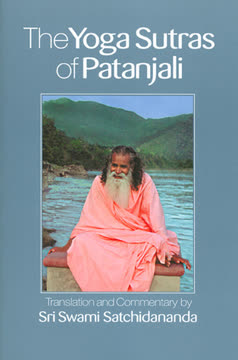


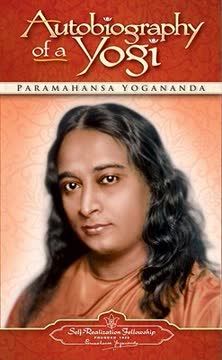

Download PDF
Download EPUB
.epub digital book format is ideal for reading ebooks on phones, tablets, and e-readers.
